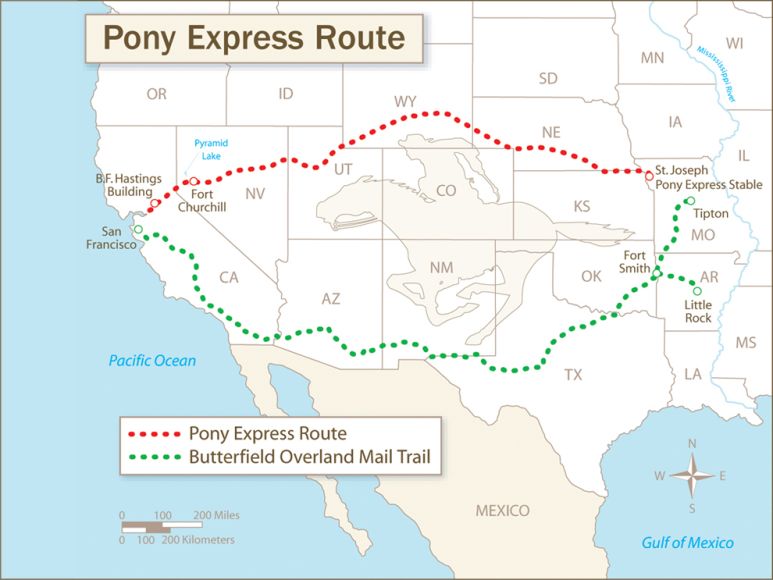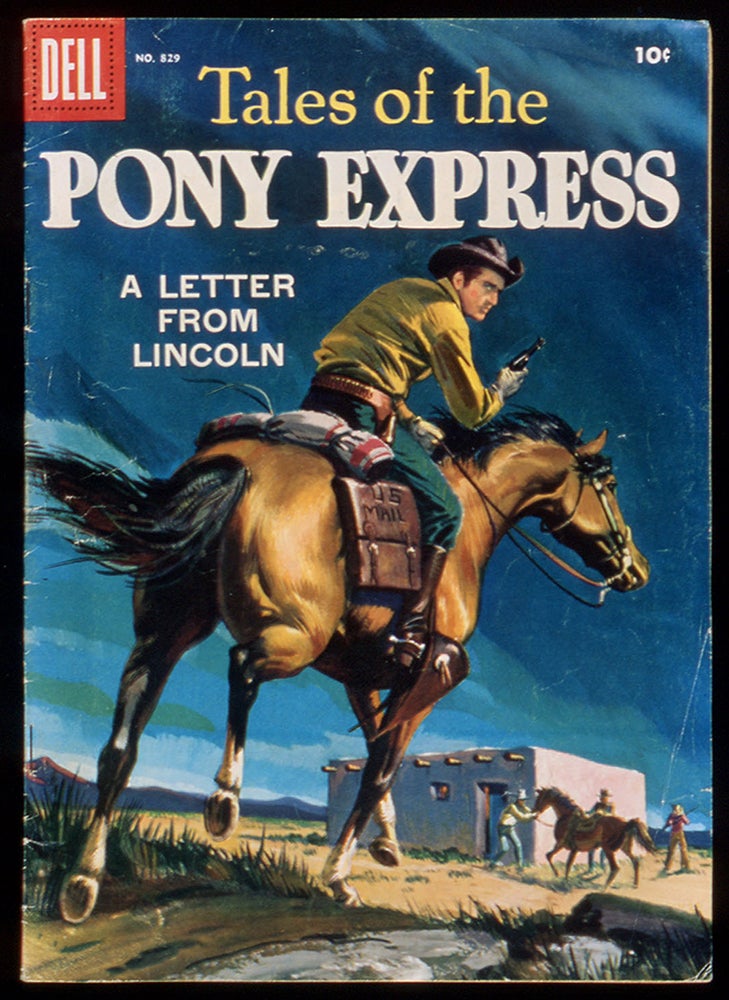Freight News:
Pony Express delivers tales of adventure but also failure
The Pony Express, formally known as Central Overland California & Pike’s Peak Express Co., may have been short-lived and was not a financial success. However, the service became famous in the history of the United States mail system.
Some experts say it’s surprising that we remember the business, given its quick and unsuccessful run.
The service was a mail delivery operation meant to close the gap between East and West. At the time, it took weeks or months to receive mail sent from across the country. The goal was to reduce the lead time to a week or 10 days. It is unclear who came up with the idea, but William H. Russell, Alexander Majors and William Bradford Waddell took the concept and ran with it, according to Britannica. The three owned and operated Russell, Majors, and Waddell, a transportation company.
As its name suggests, the Pony Express consisted of talented horse riders operating a relay to deliver mail as fast as possible. The three men brought their talents to the company, Russell handling political dealings, Majors providing livestock knowledge from life on the prairie and Waddell taking on the bookkeeping.
The first half of the Pony Express route followed along the Oregon Trail, traveling through Kansas, Nebraska, Colorado, Wyoming and Utah. The course broke off the Oregon Trail in Utah, running through Nevada. The entire distance is estimated to be 1,840 miles from St. Joseph, Missouri, to San Francisco.

How it worked
Every 10-15 miles, the horses would switch off. Sometimes the same rider continued; other times a new rider carried the mail forward. There were 200 relay stations where the riders would trade off horses and the saddlebag with mail pouches, named mochila. Britannica reports that the bag weighed roughly 20 pounds when filled. The stations also provided food and shelter for employees to recuperate after their rides.
These stations consisted of existing stage stations, where travelers could replace tired horses with fresh ones. However, the previously established stations were too far apart for the Pony Express to rely entirely on. So the company created more stations. There were estimated to be 190 stations along the route.
Russell, Majors, and Waddell selected half-breed mustangs, known to be faster. They were well kept and fed the highest-quality grain. More than 70 experienced riders joined the Pony Express, where they would experience numerous dangers throughout their journeys ranging from rough terrain to attacks from Native Americans.
The first delivery took place on April 3, 1860, and included a letter from President James Buchanan to California Gov. John Downey congratulating the governor on the launch of the service in its shipment. Forty riders made up the relay and successfully delivered the first mochila to downtown Sacramento at 5:45 p.m. on April 13, taking exactly 10 days. The California town celebrated with significant fanfare, which was replicated a few hours later in San Francisco, the mochila’s final destination.

From there on, the Pony Express operated consistently, with each rider completing a run of 75-100 miles. These riders became known as heroes thanks to the perils they faced on the road. Most of the men were young and small in stature to ensure optimal speeds on horseback.
Each rider was required to take a pledge exclaiming, “I [name], do hereby swear, before the Great and Living God, that during my engagement, and while I am an employee of Russell, Majors & Waddell, I will, under no circumstances, use profane language; that I will drink no intoxicating liquors; that I will not quarrel or fight with any other employee of the firm, and that in every respect I will conduct myself honestly, be faithful to my duties, and so direct all my acts as to win the confidence of my employer. So help me God,” says the National Postal Museum. They were to make the oath on a Bible.
Those who violated the oath were terminated.
Unfortunately for the Pony Express, a year later, the installation of a transcontinental telegraph line in October 1861 brought the service to an end. However, parent company Russell, Majors, and Waddell experienced significant financial trouble even before the telegraph line due to a substantial-sized herd of oxen freezing to death while pulling supply wagons during a blizzard. Numerous stations were also targeted in Native American attacks during the Pyramid Lake War, and the costs of the lost assets between these two issues were enough to sink the company. To make matters worse, consumers believed $5 per ounce was too expensive for the service.
The total costs of the entire enterprise were $700,000, but the company had only made $500,000. It lost almost $13 on every letter delivered. The Pony Express announced its plans to close two days after the telegraph wire was complete and delivered its final mail a month later.
Dime novels, other books, songs and even a television series kept the Pony Express alive in Americans’ hearts in the decades following its closure.
The Pony Express became known for famous stories of talented riders like Buffalo Bill, real name William Cody, whose tales of rides made him a hero to young boys across the country. Some of his famous stories include an almost continuous 22-hour ride totaling 300 miles and numerous harrowing escapes from danger. He was the subject of many of the aforementioned books, songs and shows.

Britannica notes that the Pony Express is responsible for 308 complete runs, 616,000 miles altogether, despite its financial failure. In that time, it delivered 34,753 letters and only lost one mochila. During its one-year tenure, the service solved a critical need in the United States at the time and contributed to our nation’s history.
FreightWaves Classics articles look at various aspects of the transportation industry’s history. Click here to subscribe to our newsletter!
Have a topic you want me to cover? Email me at bjaekel@freightwaves.com or follow me on Twitter.
The post Pony Express delivers tales of adventure but also failure appeared first on FreightWaves.
Source: freightwaves - Pony Express delivers tales of adventure but also failure
Editor: Brielle Jaekel